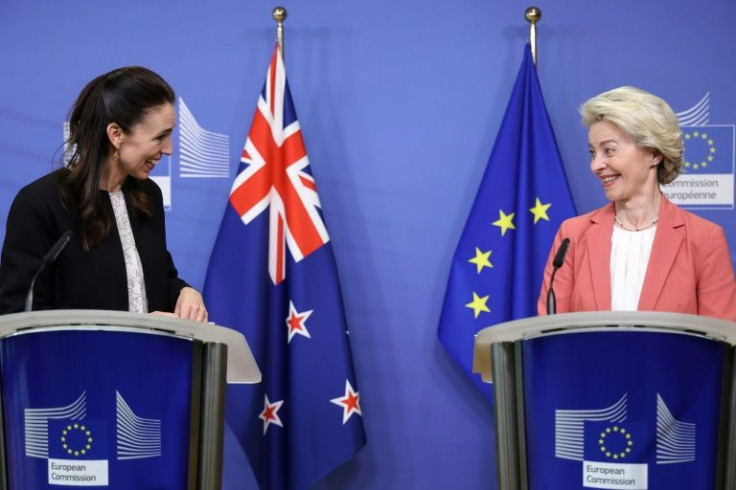EU- New Zealand FTA: As Green As It Gets

After four years of torturous deliberations, New Zealand and the European Union (EU) have completed talks on a Free Trade Agreement (FTA) that incorporates the Paris climate agreement into trade in a big way.
In fact, the green proposals found a place in the FTA only in the last week, which will liberalize the entry of green goods and services into the global trading system. The FTA will be the first by the EU to include potential sanctions for not adhering to environmental and labor standards.
The FTA has provisions if either side feels the other one is falling short of its Paris climate goals. The concerned party can possibly apply penalties if the accusations are proved to be correct.
Though the risk of penalizing on those rules is high, Jacinda Ardern, New Zealand Prime Minister, said those norms have set the bar high for other trade deals.
Setting higher international standards could benefit New Zealand producers, Ardern added while announcing the deal with European Commission President Ursula von der Leyen June 30.
The EU is a market of about 450 million high-income consumers. So, the benefits are much greater as exports to the 27-member trade block are expected to grow by $1.8 billion a year by 2035, Ardern, who helped conclude the talks in Brussels, said.
The deal comes at an extraordinary time that the EU is facing. Concluding the deal at this time is a sign that New Zealand is supporting the EU's economic warfare against Russia by isolating Moscow from global trade.
New Zealand stands "shoulder to shoulder with the EU in condemning Russia's unprovoked war of aggression against Ukraine," she said.
Under the FTA, a full 91 percent of tariffs will be removed when the pact comes into force, and 97 percent by the seventh year.
It was agriculture that held up the FTA talks, which started in 2018, and both parties were forced to make concessions.
Kiwifruit exporters in New Zealand have been coughing up $8.80 per $100 of exports to the EU since the 1970s. This tariff will be removed entirely when the deal becomes operational.
Kiwifruit, wine, onions, apples, mānuka honey and manufactured goods from New Zealand are all set to receive tariff-free access to the EU market.
Cheese-makers in New Zealand are worried that they would end up as big losers under the deal as they would have to drop calling their cheeses camembert, gouda, halloumi, mozzarella and brie. However, they can continue to use the name till the FTA comes into force. After that, they can keep on making these products by naming them something else.
The dairy and beef industries in New Zealand are expected to fetch $120 million of new revenues from the EU market, growing to $600 million within seven years. Under the FTA, New Zealand can export 10,000 tonnes of beef to the EU at a tariff of 7.5 percent a year, a sensitive issue for France in particular.
Seafood from the Pacific Island nation has a 25 percent tariff which will be eliminated, saving exporters $25 per $100 of exports.
There had been fears in New Zealand that prices of medicines would go up in the 5 million nation due to the FTA. However, New Zealand has managed to leave patent terms unchanged, saving hundreds of millions of dollars a year.
As far as the EU is concerned, the FTA is less of a win as New Zealand's tariffs have been historically low and mainly exist to be offered as a concession in trade deals.
Trade between the EU and New Zealand reached €7.8 billion last year, accounting for just 0.2 percent of the bloc's total trade. But in terms of goods and services, New Zealand is the EU's 50th-largest partner and their two-way trade is worth NZ$17.5 billion annually.
Under the FTA, tariffs will come down for EU exports like clothing, chemicals, medicines, cars, wine and confectionery.
The FTA with New Zealand can serve as a morale booster to ink new trade pacts with other nations like India, Indonesia, and Australia.
The EU has been struggling to get the backing of all its members on FTAs, which once formed the central policy for the bloc. The opposition is mainly led by France and its farmers.
The FTA with New Zealand will put the EU under pressure to revive the stalled trade talks with Australia, an agricultural powerhouse, due to opposition by France.
Now that the Czech Republic and Sweden are set to take over the presidency from France, the EU is keen on getting other nations on board to ink FTAs.
Climate-related issues never cropped up in a big way during the talks with Wellington as it is not home to major manufacturing industries. This helped the EU to incorporate its green ambitions in the FTA with New Zealand.
However, the EU-New Zealand FTA has set the bar high for other trade deals which will force them to go green.





